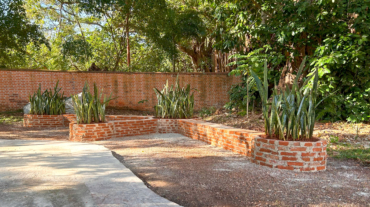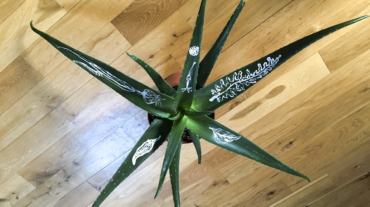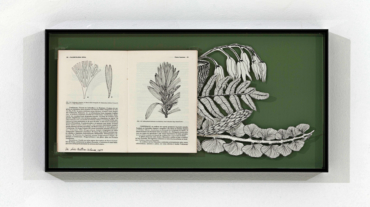The importance of the place of presentation for current artistic production has achieved, in recent decades, a significant portion of the creation of contemporary projects. This indication is shared by Hans Haacke from a well-known sentence of the artist: “the context in which a work is exposed for the first time is for me an element like the canvas and the paint”. In this respect, site and exhibition become elements revised based on contextualisation; that is, the critical and self-critical sense triggered by the encounter between the work and its locus of instauration; a kind of cuore or new creative challenge to be cultivated by artists.
It is, therefore, about the valorisation of the place of art, wherever it may be: inside, outside, near or far; through the cultural institutions. Whoever shares this choice, whoever is dedicated to this cultivation, discusses the place of art instead of places for art. That is why the idea of crossing is well suited to us as a proposal that understands this new way of acting by the artist, governed by a degree of surrender, of adjustment and belonging of his creation to the environments that present and constitute them as artistic.
The possibility of temporarily occupying a concrete and glass architectonic building within a public park offers an extremely instigating model for a group exhibition of artists interested in the possible intersections between memory, document, trails, veiling, gravity, landscape and nature. These elements also constitute the imaginary of Historical Museums dedicated to cities, localities and their singularities, as is the case of this Museum.
The view offered through the glass walls of the first floor could not be more generous, more provocative. Through the objects presented here, many of them for the first time, this view offers us the seductive property that is the very matter of art and reflects its rarity before daily life: if, on the one hand, the presence of the exterior natural landscape exerts an imposing force so that the ambience is constituted, on the other, it is the presence of this group of artistic objects installed here that is the ordering element of the singularity that imbues the whole place.
The group of artists gathered in this exhibition responds to the proposal made to them regarding the ways and manners in which Memory, Document, Transparency, or Structure appear and/or are the basis of their work. The variable choice for quite experimental materials and forms presented in their works also instigates us to go through them as one who wants to know; who presumes in this unconventional dialogue the surrender, the co-participation of a particular nucleus, of a certain secret that can be reached.
Glass, metal and earth, as much as acrylic, paper, and electric light structure her poetic choices from portraits-type (Alzira Ballestero); landscapes-collages-rearticulated (Valéria Scornaienchi and Vane Barini); collections-memorials (Iza Figueiredo), species-resilient (Patricia Rebello and Maria Luiza Canela); packings (Marilde Stropp and Ana Almeida), de-centring (Heloisa Gregori) and tensions (Thiago Bortolozzo and Danilo Garcia) produced by their symbolic and material properties, as much as by their disposition in space.
Atravessamentos Poéticos
Sylvia Furegatti
Vive e trabalha em Campinas. Artista visual e curadora.
Sua produção artística e de pesquisa acadêmica direcionam-se para ações e intervenções na paisagem, além de instalações e objetos que relacionam Arte, Paisagem e Natureza.
É docente plena do PPGAV – Instituto de Artes da Unicamp, lotada no Departamento de Artes Visuais. Atualmente ocupa o cargo de Diretora do Museu de Artes Visuais – MAV Unicamp e representa a UNICAMP no Conselho Estadual de Museus de São Paulo (COSISEM). É Coordenadora Nacional do Grupo de Estudos sobre Arte Pública no Brasil – GEAP BR (geapbr.wordpress.com) e Vice coordenadora do Grupo de Estudos sobre Arte Pública na América Latina – GEAP LA. (geaplatinoamerica.org). Em 2007 fundou o Grupo Pparalelo de Arte Contemporânea dedicado a intervenções artísticas e ações em espaços públicos fora do eixo das grandes capitais. O projeto ajustou-se ao longo dos anos e assume hoje configuração intitulada de PPLL (ppllartgroup.net)
local: Casa de Vidro de Campinas / Galerias do primeiro piso e área externa
período: de 28.9 à 10.12.2017
curadoria e textos: Sylvia Furegatti
artistas participantes: Vane Barini, Marilde Stropp, Valéria Scornaienchi, Iza Figueiredo, Ana Almeida, Danilo Garcia, Heloisa Sandoval Gregori, Patricia Rebello, Alzira Balestero, Thiago Bortolozzo e Maria Luiza Canela
Registros fotográficos: Vane Barini, Valéria Scornaienchi, Patricia Rebello, Arianne Vitalle, Thiago Bortolozzo, Adriana Barão e Edis Cruz
Apoio de Montagem: Wilson R M Dutra (MACC) e Francisco Marchi Netto (Bolsita SAE Unicamp)
Design do site: hebertgouvea.com / @hebertgouvea
Design do convite virtual: Ivan Avelar (DEPROD IA Unicamp)
Agradecimentos: Secretaria Municipal de Cultura de Campinas; MACC e Casa de Vidro
Casa de Vidro de Campinas / Museu da Cidade
Parque Lago do Café. Av Heitor Penteado, 2145 Parque Taquaral, Campinas SP
contato: sylviaf@unicamp.br / @sylviafuregatti




